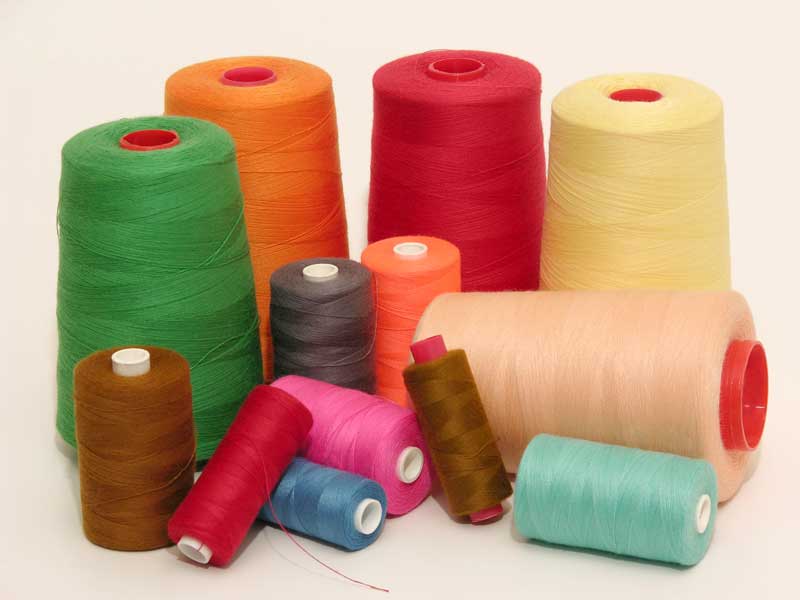 We may have run ahead of ourselves up to now in dealing with specific, specialist purpose threads so this edition is going to look at perhaps the most common thread we all know and seek out some of its distinctive qualities.
We may have run ahead of ourselves up to now in dealing with specific, specialist purpose threads so this edition is going to look at perhaps the most common thread we all know and seek out some of its distinctive qualities.
The most commonly used i.e. quite unknowingly by most of the population, is T120s Spun Polyester.
Before you all yawn or shriek ‘how tedious’ please just read a little further. This is the thread we all pick up to e.g. sew on a shirt button, a nametape, a loose hem, general repairs. Don’t you agree that it must have something ‘going for it’ to make it so adaptable?
Key Thread Properties
Polyester is synthetic. It is very hard wearing and durable. It also has the ability to hold dyes and will take a dyestuff and keep it – it will not run or fade – plus it can be dyed in to a vast array of shades.
The trick is not to be duped in to buying the cheapest just because it is not for a specific purpose. Please please please as a result of this article don’t think that a bobbin of thread from the supermarket will suffice. You get what you pay for and why economise by a few pence and get an inferior product?
A good General Purpose Polyester Thread is evenly twisted with 2 plys. This means that for every inch of thread there are at least 20 complete revolutions applied. These revolutions/twists form the strength. Then, very importantly, there is not a gap – that would mean a weak spot and the thread would simply break, the twisting process must carry on evenly throughout the thread (for more details on twist see Threads In Focus – Edition 1).
Lubrication Is Critical
In order that a polyester thread will work at all in the needle, lubrication is essential. It is susceptible to heat. Even heat from hand sewing never mind from a machine needle may cause it to disintegrate/melt – then break. The answer is lubricant. The thread is lubricated at its final wind on to a bobbin to ensure complete sew-ability.
The lubricant is applied smoothly and evenly. Initially it stands on top of the thread but then it is put through radio frequency waves i.e. the equivalent of a microwave oven. This forces the lubricant in to the thread and impregnates it.
We host a tailoring class every week at our Sewing Centre. Under our tailoreses keen eye the students make up skirts, jackets, dresses, trousers to an extremely high standard – all using Spun Polyester as the mainstay of the garment.
A few years ago we were asked by a textile designer to supply threads for free machine embroidery kits. We looked at the designs – they were stunning pictorials with a massive colour palette. We questioned the end use – they would be adapted in to hangings, cushion covers, bags… We considered the types of machines they were going to be used on – new, old, ancient(!) With so many variables we could only come up with one solution – a good all rounder – Spun Polyester. The kits were successful. They were fun to make with smashing results.



